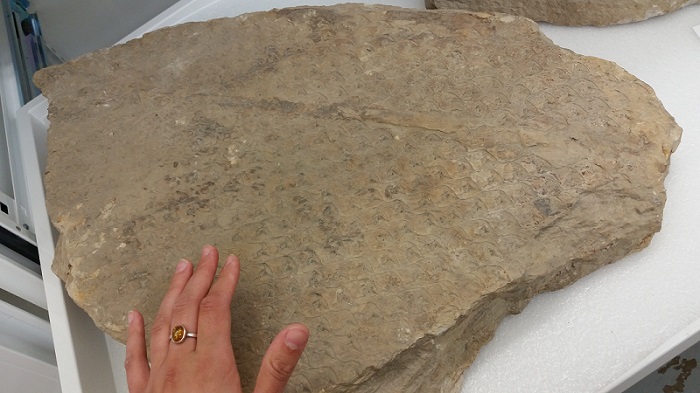Here’s another look at our specimen from last Friday, to help you get a sense of scale:

See? Quite a sizable fossil, and yet the pattern really reminds me of the many patterns I’ve seen at the cellular level. It looks like scaled skin, but this fossil is not from an animal at all. This is an impression from the trunk of an ancient tree: it’s inverted bark from the genus Lepidodendron.
These trees were a significant part of the coal forests, so when we burn coal, we’re using them today. They didn’t look much like modern trees and they didn’t live much like them either. The Lepidodendron are commonly known as scale trees, and they could be pretty enormous. Their trunks grew to more than a meter in diameter, and it’s thought they grew to heights of over thirty meters.
Their forests were quite dense compared to modern trees, because their growth patterns were so different from trees today. The Lepidodendron would grow as unbranched poles, allowing many trees to grow to a significant size very close together. They would not branch out until they were fairly mature; only as they reproduced near the end of their life cycle. These plants are so ancient that they did not reproduce with true seeds, but instead with fairly elaborate encapsulated spores. These trees did not live so long as modern trees, either. It’s estimated they completed their life cycle in only ten to fifteen years. Think of it: these giant trees, growing so quickly? Pretty impressive in terms of sheer carbon fixation…
The winner this week? GrizzlyD! Congratulations, and thanks for playing! If you have a fossil you want to share, send your pictures to me at schoerning at ncse.com. And if you need another fossil fix, check out the UIowa Palentology Repository, which we thank for this week's fossil!

